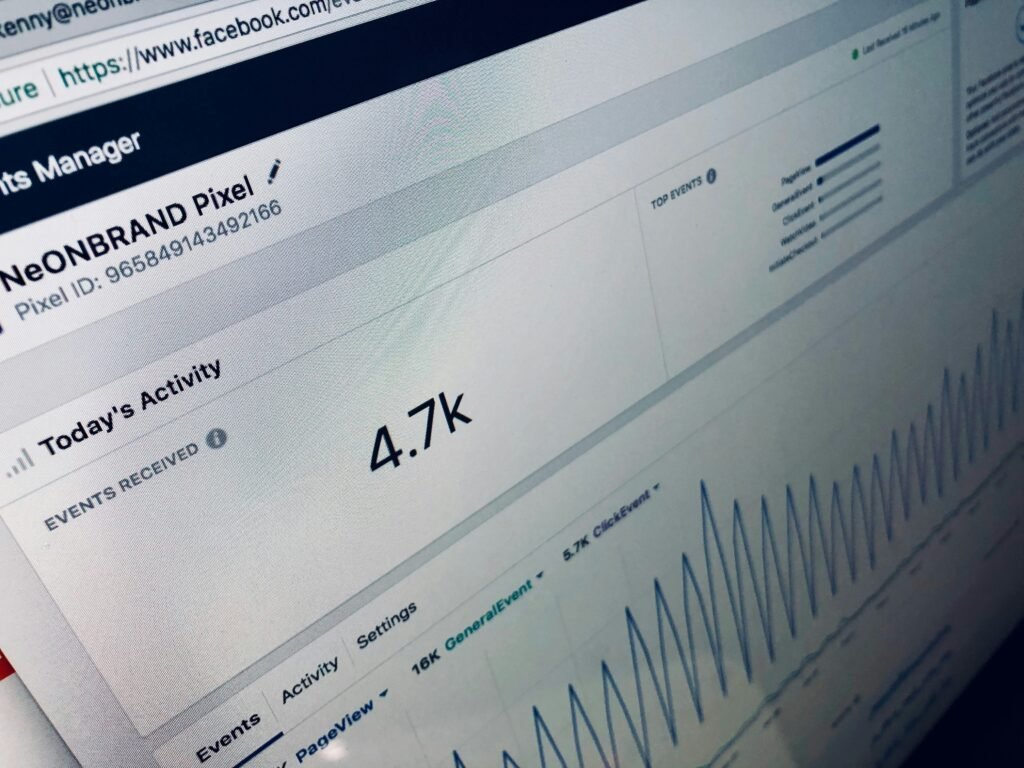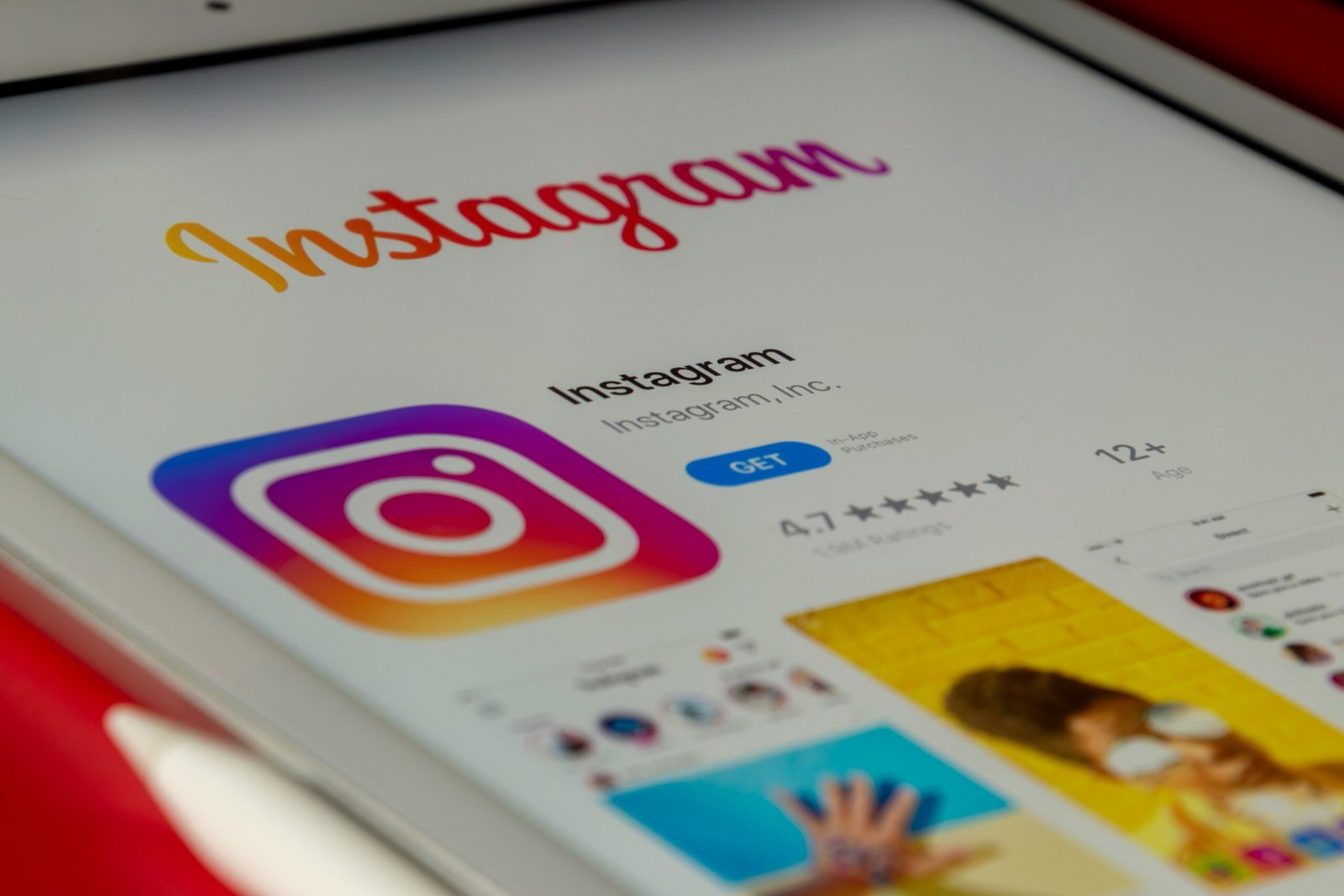Table of Contents
ToggleIntroduction: Instagram as a Business Giant
In the crowded online marketplace, where attention is the most valued currency, Instagram has grown well beyond its humble beginnings as a basic photo-sharing application. For small businesses, it is an unprecedented, cost-efficient, and visually-oriented platform to establish brand identity, talk directly with target audiences, generate sales, and compete successfully against bigger brands. As the most used social network with more than 2 billion monthly active users worldwide, which makes it 3rd most popular social network after Facebook and Youtube. Instagram is a user base predominantly concentrated among the valuable 18-34 age group, and features intentionally built for commerce and connection, Instagram is not only a “nice-to-have” but a strategic necessity for small business survival and success. This blog goes in depth into the diverse applications of Instagram for small business, with laser precision targeted on the subtleties of social media promotion via this vibrant platform.
Brand Identity and Awareness: The Visual Foundation
Building a Compelling Visual Story
- Aesthetic of High Quality: Instagram is a visual platform. Professional, high-quality photography and video are not an option. This sets up professionalism and gets noticed in an oversaturated feed. Spending money on fundamental photography knowledge or inexpensive tools (such as smartphone editing apps – VSCO, Lightroom Mobile) is necessary.
- Building a Unified Brand Identity: Leverage a uniform color palette, filter aesthetic, and overall look that matches your brand personality (e.g., simple, bold, rural, high-end). This visual cohesion creates instant recognition.
- Embodying Brand Personality: Move beyond products. Give behind-the-scenes peeks (workshop tours, meet the team), company values, and the human touch. This creates emotional relationships and makes the brand relatable. The neighborhood bakery that provides the early morning bake, flour-covered hands, and the owner’s history creates an evocative story.
- The Power of the Bio: The 150-character bio and sole link are primo real estate. Simply declare what you do, whom you serve, and your value proposition. Employ relevant keywords and emojis for personality. Strategically utilize the link (Linktree, Beacons, Shopify Linkpop) to send traffic to more than one destination (website, new product, blog post, event).
Building Brand Authority and Trust
- Educational Content: Establish yourself as an authority. Give tips, tutorials, industry information, and how-to content pertaining to your topic. A garden center may upload short videos on repotting plants; a financial planner can upload infographics on the basics of budgeting.
- User-Generated Content (UGC): This is marketing gold. Encourage customers to share photos/videos using your product/service and tag your brand. Reposting UGC (with permission!) provides powerful social proof, builds community, and demonstrates real-world satisfaction. Create a branded hashtag to curate UGC easily.
- Authenticity and Transparency: Consumers, especially younger demographics, value authenticity. Be genuine in your communication, address mistakes openly, and share your business journey – the successes and the challenges.

Targeted Audience Engagement and Community Building: The Heart of Social Marketing
Understanding and Reaching Your Ideal Customer
- Instagram Insights: This free analytics tool (available for Business/Creator accounts) is a goldmine. Examine follower demographics (age, gender, location), active times, and content performance (reach, impressions, engagement). Adjust your content strategy and posting schedule based on this data.
- Hashtag Strategy: Study and use a combination of applicable hashtags:
- Branded: Specific to your business (#YourBrandName).
- Community: General but applicable (#SmallBusinessOwner, #LocalEats).
- Niche-Specific: Extremely targeted to your service/product (#HandmadeCeramics, #VeganSkincare).
- Location-Based: Important for local businesses (#ChicagoBoutique, #SeattleCoffee).
- Geo-Tagging: Mentions of your location in posts and Stories make your content findable to users looking in that area, which is important for brick-and-mortar or locally-serving businesses.
- Engaging People: Pose questions in captions, conduct polls and quizzes in Stories, apply the “Question” sticker, facilitate Q&A. Get comments and answer each and every one of them in a timely and thoughtful manner.
- Using Instagram Stories: This 24-hour ephemeral content is ideal for:
- Immediate Updates: Flash sales, daily offers, event coverage.
- Interactive Elements: Polls, quizzes, sliders, question boxes.
- “Close Friends” List: Provide special content or promotions to your most active followers.
- Highlights: Preserve valuable Stories (e.g., FAQs, Testimonials, Products, Tutorials) forever on your profile.
- Instagram Reels: Leverage short-form, fun, or informative video. The algorithm highly prioritizes Reels, with huge reach potential. Display product applications, give quick tips, join trends (naturally!), or highlight your process. Use trending audio and relative keywords in captions.
- Instagram Live: Host live launches, interviews, behind-the-scenes excursions, or live Q&As. Creates a sense of immediacy and strong connection. Promote the Lives beforehand.
- Direct Messages (DMs): Use DMs as a key customer service and sales touchpoint. Respond promptly and professionally. Implement automated welcome messages for repetitive inquiries but with human follow-up. Instagram’s “Quick Replies” can be used for efficiency.
Building a Loyal Community
- Build a Sense of Belonging: Encourage interactions among followers (e.g., include follower spotlights, develop a community hashtag challenge).
- Exclusive Offers: Treat followers with incentives, early access, or contests exclusive to Instagram.
- Value-Driven Content: Regularly share content that amuses, enlightens, or inspires your audience, but not merely sells to them. The 80/20 rule (80% value, 20% promotion) is an apt benchmark.
Generating Sales and Conversions: Translating Scrolling into Buying
Smooth Shopping Experiences
- Instagram Shop: The foundation of social commerce. Create a virtual storefront directly on Instagram by linking your product catalog (through Facebook Commerce Manager or third-party platforms such as Shopify). Features are:
- Product Tags: Tag products within Feed posts and Reels. Users tap to view details and price.
- Product Stickers: Tag products in Stories for immediate purchase intent.
- Shop Tab: A stand-alone tab on your profile featuring your full catalog, browsable by collections.
- Checkout (Meta Checkout): Enable users to make purchases within Instagram, greatly lowering friction (subject to availability by region and eligibility).
- Link in Bio Strategy: For businesses that don’t have Instagram Shop enabled or to drive traffic outside the catalog (e.g., blog articles, appointments, certain landing pages), optimize the one link with a link-in-bio tool. Explicitly send users in your captions (“Link in bio for more information/shop!”).
Strategic Promotions and Campaigns
- Limited-Time Offers (LTOs): Build urgency with Stories countdown stickers or Feed posts with flash sale announcements. Promote extensively across all content types.
- Exclusive Discounts: Provide Instagram followers exclusive discount coupons (trackable!) for their loyalty.
- Contests and Giveaways: Great for fast follower growth, engagement boosts, and email list building. Ask followers to do actions such as tagging friends, following your page, and sharing the post. Make sure there are clear rules and adherence to Instagram’s rules.
- New Product Launches: Create hype with Story teasers, behind-the-scenes Reels, and countdown stickers. Apply Product Tags/Stickers upon launch.
Instagram Advertising: Targeted Reach Amplified
Why Advertise? Organic reach is limited. Advertisements pay for targeted targeting by demographics, interests, behaviors, and custom audiences (website visitors, email lists, previous engagers).
Ad Formats
- Photo/Video Ads: Display in Feed and Stories.
- Carousel Ads: Highlight multiple products or features in one ad.
- Collection Ads: Highlight a main video/image with thumbnail product images underneath, sending users directly to a shopping experience.
- Reels Ads: Engage users fully submerged in short-form video content.
Campaign Objectives
Select based on objectives: Brand Awareness, Reach, Traffic (to site), Engagement, App Installs, Video Views, Lead Generation, or Conversions (buys).
Specific Targeting
Take advantage of Facebook’s powerful ad system (Meta Ads Manager) to identify your best customer. Apply lookalike audiences to target new users that resemble your current best customers.
Budget Management
Go small and grow. With budgets as little as $5−$10 per day, you can have successful campaigns. Track the performance metrics (CPC, CPM, ROAS) and then optimize your campaigns.
A/B Testing
Experiment with varied creatives, ad copy, audience and placements to figure out what works best and gives the best ROI.

Customer Service and Relationship Management: The Human Touch
Proactive and Responsive Communication
- DMs as a Support Channel: Most customers prefer messaging over emails or calls. Provide instant, useful, and courteous replies. Mention response timelines in the bio or auto-messages.
- Public Comment Handling: Respond professionally and quickly to every comment on your posts, particularly questions and issues. Public reply to concerns is a sign of good customer service.
- Making Use of Story Features: Utilize the “Question” sticker for FAQs or deal with popular concerns in advance using Stories. Post customer service timings and contact details.
Collecting Feedback and Insights
- Polls and Quizzes: Employ these engaging Story features to obtain speedy opinion on product interest, possible new products, or content ideas.
- Question Sticker: Simply request feedback or suggestions from followers.
- Monitoring Mentions & Tags: Track when users mention your brand (even without a tag) to see if it’s praise, issues, or UGC opportunities.
- Reviews and Testimonials: Ask happy customers to leave reviews (if that’s an option) or testimonials through DMs or comments. Display positive feedback.
Competitive Analysis and Market Intelligence: Learning from the Landscape
Monitoring Competitors
- Monitor major competitors’ content playbook, product releases, promotions, engagement strategy, and customer interactions.
- Monitor their hashtag adoption and engagement metrics.
- Monitor their exploitation of new features (Reels, Shopping, etc.).
Finding Trends and Opportunities
- Look at what content types (particular Reels formats, Story features) are engaging in your niche.
- Identify gaps in competitors’ plans that you can exploit (e.g., improved customer service, more informative content, different product emphasis).
- Find possible collaborators (influencers, complementing businesses) by observing who your competition or target market is interacting with.
Analytics and Measurement: Data-Driven Decision Making
Utilizing Instagram Insights
- Audience: Learn about follower growth, demographics, location, active times.
- Content: Compare reach, impressions, engagement (likes, comments, saves, shares) for Feed posts, Stories, and Reels. See top-performing content.
- Activity: See profile visits, website taps, and call/email button taps.
- Shopping Insights (if used): Follow product views, taps, and purchases driven from Instagram Shop.
Measuring Campaign Effectiveness
- Paid Ads: Leverage Meta Ads Manager for detailed data on ad spend, reach, impressions, clicks, conversions, cost per result (CPC, CPA, ROAS).
- Website Traffic: Apply UTM parameters to links posted to Instagram to follow traffic sources and conversions in Google Analytics.
- Discount Codes: Follow sales driven by Instagram-specific promo codes.
Key Performance Indicators (KPIs): Measure what success is
- Awareness: Follower growth, Reach, Impressions, Profile Visits.
- Engagement: Likes, Comments, Shares, Saves, Story Interactions, DMs.
- Conversion: Website Clicks, Email Sign-ups, Lead Form Completions, Sales (Tracked through Instagram Shop, promo codes, UTM parameters).
- ROI: Compare revenue generated through Instagram efforts (organic and paid) to costs (ad spend, content creation time, tools).

Overcoming Challenges: Navigating the Instagram Ecosystem
- Algorithm Changes: Instagram’s algorithm is always changing. Keep up to date via credible marketing sources, prioritize producing high-quality, engaging content (particularly Reels), and have a diversified strategy (don’t put all your eggs in one basket).
- Content Creation Demands: Regularly producing new content can be time-consuming. Work ahead with a content calendar, batch content production, reuse content across formats (convert a blog post into a carousel and Reel), and utilize UGC.
- Standing Out in a Crowded Space: Focus on your unique value proposition and authentic voice. Niche down if necessary. Prioritize deep engagement with your core audience over vanity metrics like follower count alone. Utilize highly targeted ads.
- Managing Negative Feedback: Respond professionally, promptly, and publicly where appropriate. Take sensitive conversations to DMs. Use feedback constructively to improve.
- Time Management: Be strategic. Utilize scheduling tools (Meta Business Suite, Later, Buffer) to schedule posts beforehand. Reserve certain times for engagement and community management. Prioritize high-impact activities.
The Future of Instagram for Small Business: Emerging Trends
- Augmented Reality (AR) Experiences: Virtual try-ons (glasses, makeup, furniture) and interactive filters will be more in use, improving the shopping experience.
- AI-Powered Features: More advanced AI features to help with content creation (image/video edit suggestions, captioning), ad optimization, customer support chatbots, and tailored shopping suggestions.
- Improved Shopping Features: Additional shopping integration into Reels, smoother checkout experiences, and possibly shopping-enabled live streams.
- Vertical Video Dominance: Reels and Stories will remain a priority. How to master short-form, interactive vertical video is a key skill to master.
- Authenticity and Community Orientation: With users looking for real connections, companies that focus on openness, values, and building true communities will flourish.
- Creator Collaboration Evolution: From mere product placement to more substantial, longer-term collaborations with micro and nano-influencers who are genuine supporters.
Conclusion: Instagram – The Indispensable Small Business Toolkit
For today’s small business, Instagram is more than just a social website; it is a living, multifunctional marketing machine, sales pipeline, customer support center, and competitive intelligence platform all in one. Its graphic nature, huge scope, advanced targeting features (both natural and paid), and continuously changing commerce capabilities provide historic possibilities.
Victory on Instagram takes more than occasional posting. It necessitates a strategic, consistent, and data-based methodology focused on establishing a genuine brand, intensely understanding and interacting with the target market, offering real value, tapping into the platform’s strong shopping capabilities, and carefully measuring outcomes. The difficulties of algorithm changes and content requirements are legitimate but within control with planning, flexibility, and attention to fundamental marketing principles practiced within Instagram’s distinctive environment.
Small businesses that leverage Instagram tactically – investing in engaging content, encouraging substantive interactions, leveraging its transactional features, offering first-rate service, and continually learning from metrics – set themselves up not only to survive, but to flourish in the age of the Internet. Where connection and visual beauty inform shopper choices, succeeding at Instagram marketing is no longer a nicety but a necessity; it is key to realizing enduring expansion, securing long-term customer relationships, and establishing a clear niche in the crowded marketplace. The filter is not only for pictures; it is for directing your business approach to the mighty lens that Instagram offers in order to engage and connect with your target clientele.
